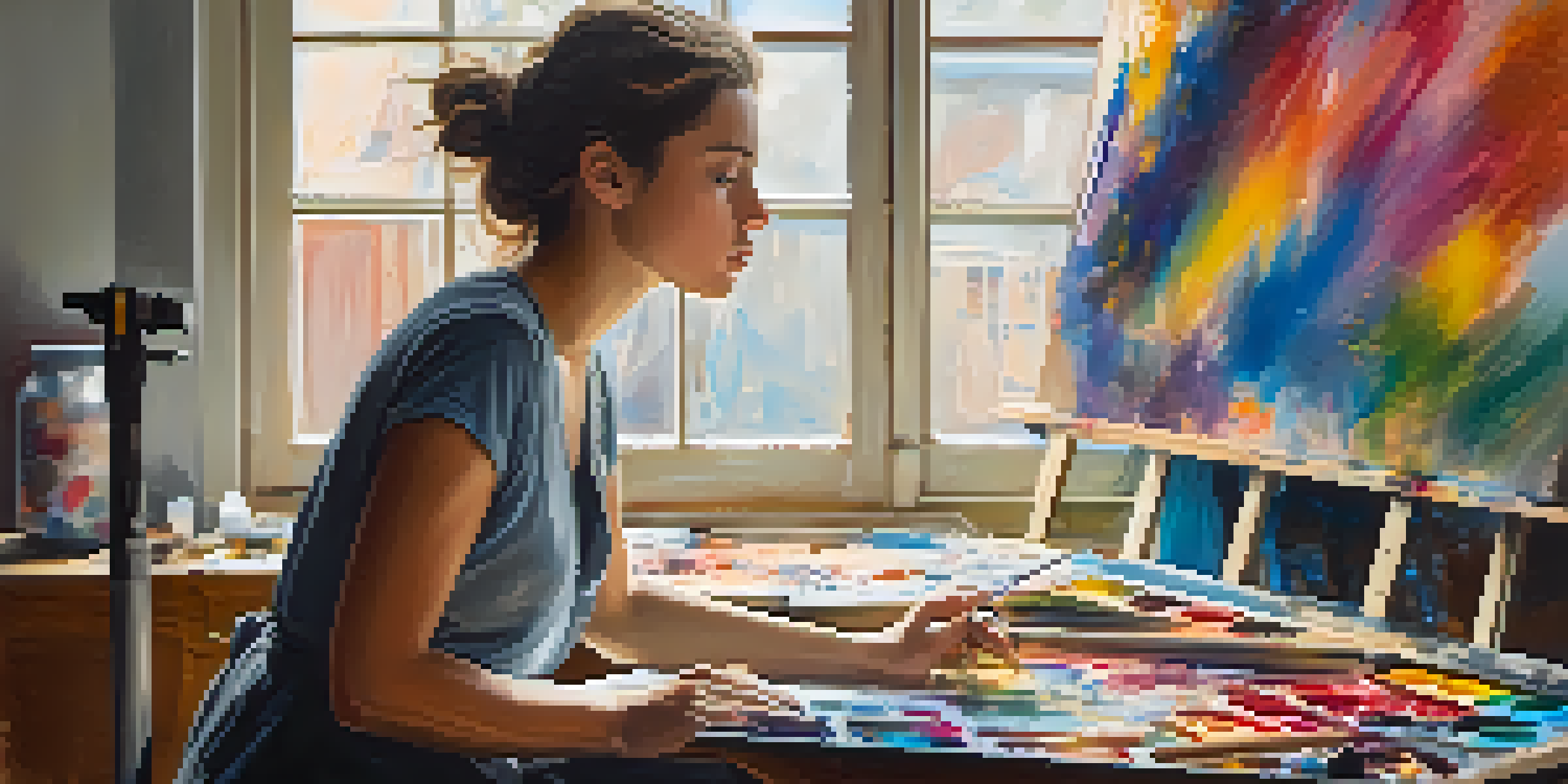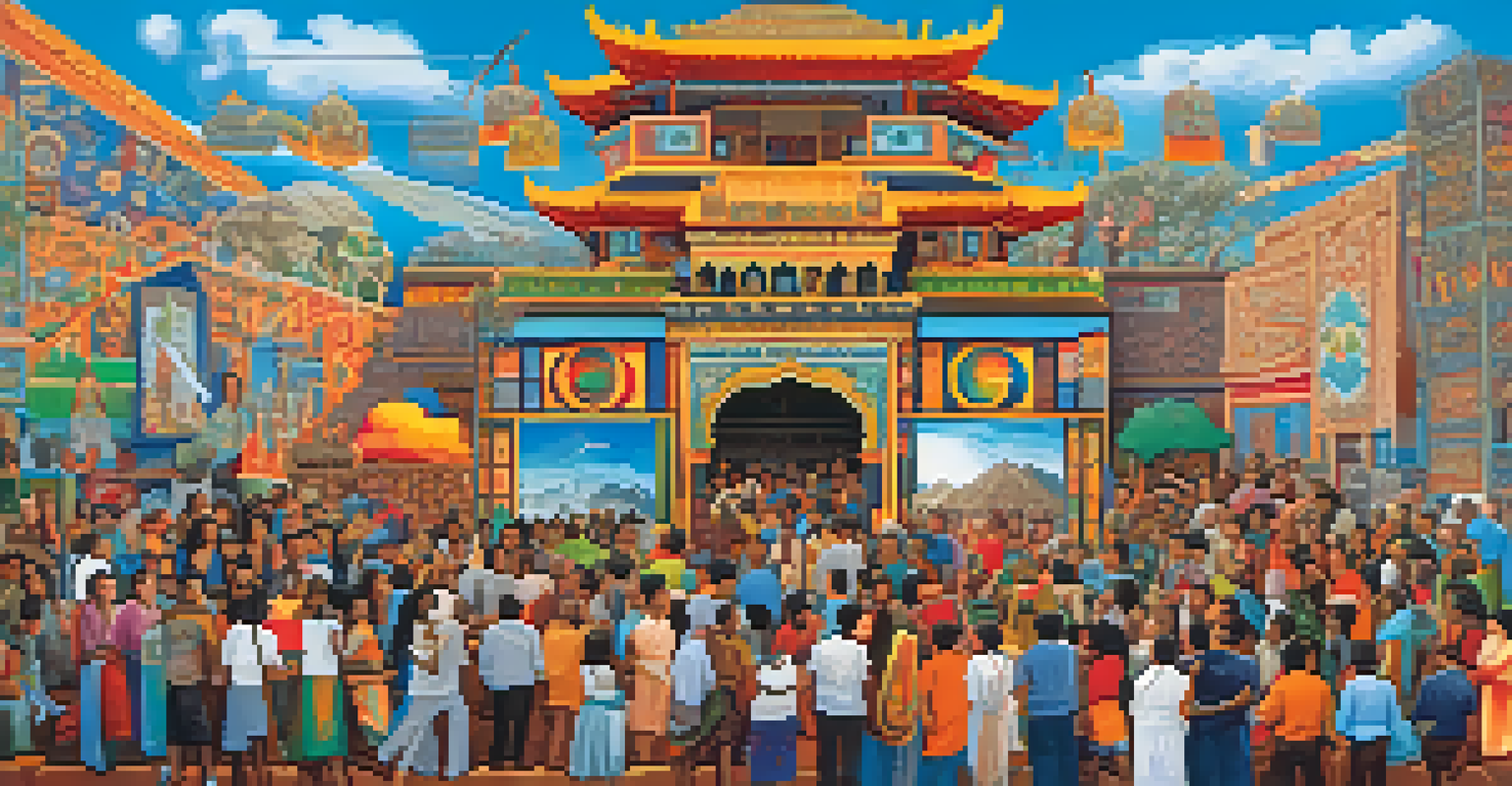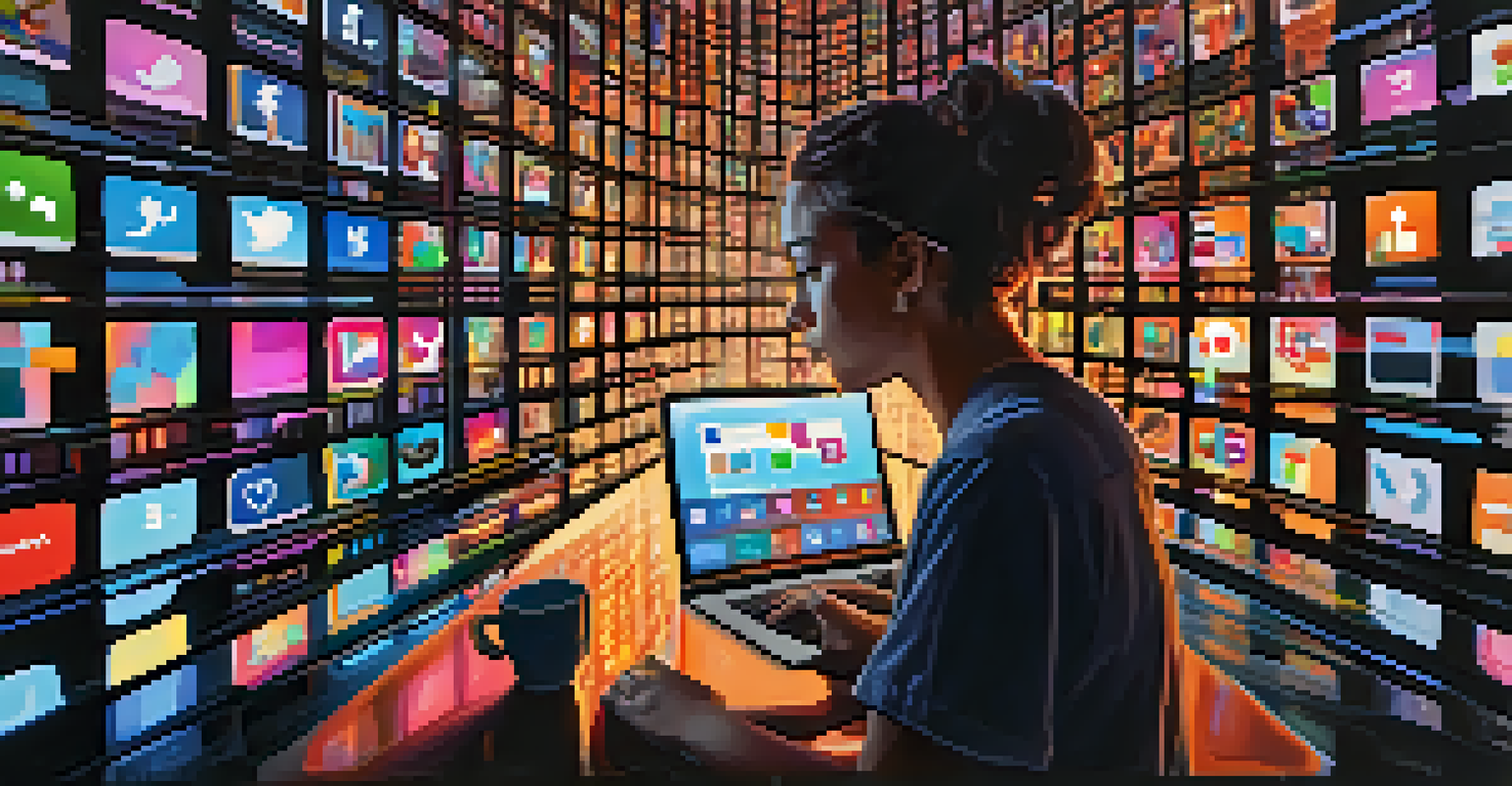Identity and Self-Representation in Contemporary Art

The Evolution of Identity in Art Through the Years
Throughout history, artists have used their work to explore identity, evolving from traditional representations to more subjective interpretations. For instance, the Renaissance showcased individualism, while modernism questioned societal norms. Today, contemporary art reflects a rich tapestry of identities, influenced by culture, gender, and personal experiences.
Art is the most beautiful of all lies.
This evolution signifies a shift where artists no longer just depict reality but express their inner selves and societal commentary. Think of artists like Frida Kahlo, who painted her own struggles and identity, making her work deeply personal yet universally relatable. These layers of meaning allow viewers to connect with the artist on a more profound level.
In essence, the conversation around identity in art has become more inclusive, inviting diverse voices to the forefront. Artists today challenge conventional boundaries, using their work to reflect the complexities of modern identity in ways that resonate with a wide audience.
Self-Representation: A Personal Narrative in Art
Self-representation in contemporary art is about more than just the artist's image; it’s the narrative they choose to share. Artists often utilize self-portraiture to express their personal stories, beliefs, and emotions. This practice not only provides insight into their lives but also invites viewers to reflect on their own identities.

Take the work of Cindy Sherman, for example, who uses photography to create various characters and scenarios, questioning the roles women play in society. Through her lens, we see the construction of identity as a multifaceted performance rather than a fixed state. This approach encourages audiences to consider how identity is shaped by both personal choices and societal expectations.
Identity in Art Reflects Diversity
Contemporary art embraces a rich tapestry of identities, showcasing diverse voices that challenge conventional boundaries.
Ultimately, self-representation allows artists to engage in a dialogue about identity, exploring themes of authenticity and perception. It serves as a powerful reminder that every artwork is not just a visual experience but a storyteller inviting us into its world.
Cultural Identity and Its Reflection in Art
Art has the unique ability to reflect cultural identities, often acting as a mirror to society. Contemporary artists draw from their heritage, using their backgrounds to inform their creative expressions. This cultural lens not only enriches the artwork but also educates viewers about diverse experiences and histories.
I am my own muse, the subject I know best. The subject I want to better.
For instance, the works of artists like Ai Weiwei highlight the intersection of personal narrative and political commentary, addressing issues of identity in the context of cultural and national identity. His installations often provoke thought and discussion, making viewers reconsider their own cultural affiliations. This interaction fosters a greater understanding of how culture shapes our perceptions of self.
By engaging with cultural identity through art, we not only celebrate diversity but also challenge stereotypes and preconceived notions. This ongoing exploration encourages a broader dialogue about the complexities inherent in identity, pushing us to acknowledge and appreciate our differences.
Intersectionality: Navigating Multiple Identities
Intersectionality is a concept that acknowledges the overlapping social identities, such as race, gender, and class, that shape individual experiences. In contemporary art, this idea plays a crucial role in understanding how artists navigate their multiple identities. By addressing intersectionality, artists can convey the complexities of their lived experiences and the societal structures that influence them.
Consider the works of artists like Zanele Muholi, who powerfully documents the lives of black LGBTQ+ individuals in South Africa. By highlighting these intersecting identities, she not only raises awareness but also celebrates the richness of diversity within the community. This approach encourages viewers to consider how various aspects of identity intersect and impact personal experiences.
Art as a Narrative of Self
Self-representation in art invites artists to share personal stories, fostering deeper connections with viewers.
Embracing intersectionality in art fosters a deeper understanding of identity as layered and multifaceted. It challenges simplistic narratives and invites us to explore the richness of human experience, ultimately making art a powerful tool for social change and empathy.
Digital Identity: Art in the Age of Technology
As technology continues to evolve, so does the concept of identity in art. Digital platforms allow artists to explore and express their identities in innovative ways, often blurring the lines between the virtual and the real. This shift raises questions about how online personas reflect our true selves and the impact of social media on self-representation.
Artists like Jon Rafman utilize digital mediums to examine our interactions within virtual spaces, often highlighting the surreal aspects of online identity formation. His work prompts viewers to reflect on their own digital lives and the narratives they construct online. This exploration of digital identity adds a modern layer to the conversation about self-representation.
In a world where many of us curate our identities online, the role of digital art becomes increasingly significant. It challenges us to consider how technology shapes our perceptions of self and the ways we engage with others, making it an essential topic in contemporary discourse.
The Role of Community in Shaping Identity Through Art
Community plays a vital role in shaping individual identity, and this dynamic is often reflected in contemporary art. Artists frequently draw inspiration from their communities, using their work to address collective experiences and issues. This communal aspect not only enhances the artwork but also fosters connection among viewers and artists alike.
For example, community-based art projects like those led by Theaster Gates bring together diverse groups to collaborate on creating meaningful work that reflects their shared experiences. These projects highlight the importance of dialogue and collaboration in shaping identity, reminding us that art can be a powerful catalyst for community engagement.
Community Shapes Artistic Identity
Community-based art projects highlight the collective experiences that influence individual identity and foster connection.
By emphasizing the role of community in identity formation, artists challenge the notion of the solitary artist and instead celebrate collective storytelling. This approach encourages a deeper appreciation for the interconnectedness of our identities and the power of art to unite us.
Challenging Norms: Art as a Tool for Social Change
Contemporary art often serves as a platform for challenging societal norms, particularly regarding identity and representation. Artists use their work to confront issues such as inequality, discrimination, and cultural stereotypes, making powerful statements about the world around us. This activism through art invites viewers to question their own perspectives and engage in critical conversations.
Take the work of artists like Kehinde Wiley, who reimagines classical portraiture by featuring people of color in heroic poses traditionally reserved for white figures. His art not only celebrates diversity but also challenges historical narratives surrounding identity and representation. This bold approach encourages viewers to rethink societal values and promotes inclusivity.

By leveraging art as a vehicle for social change, contemporary artists inspire action and reflection. Their work serves as a reminder that art is not just about aesthetics; it is a powerful medium for advocating for a more equitable and just society.